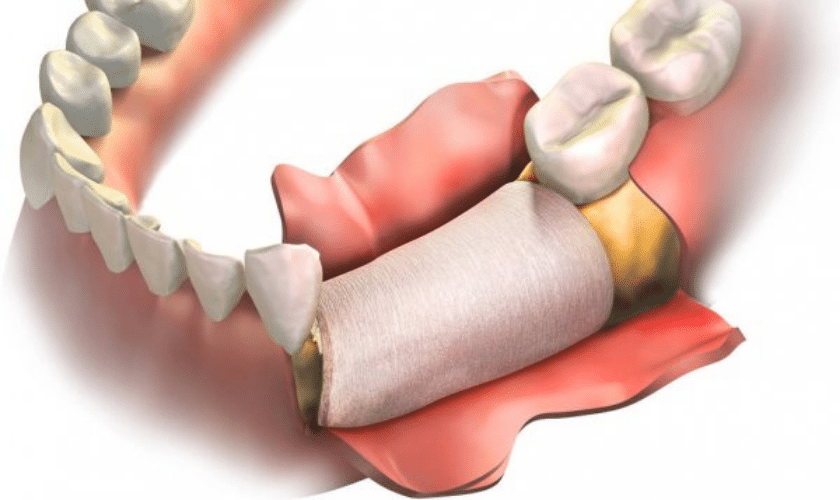ONLINE SCHEDULING AND VIRTUAL CONSULTS AVAILABLE

What Should You Know About Bone Grafting?

The concept of dental bone grafting and augmentation has been around for quite a while. The technique is considered less invasive and is often performed as an outpatient surgery. When there is inadequate jawbone mass to securely support a dental implant, a bone graft is required. Bone loss can be caused by various factors, including missing teeth, gum disease, and other systemic disorders.
Bone augmentation for dental implants necessitates using an appropriate material, which can come from numerous places. Bone material can be extracted from multiple body parts, including the hip and lower jaw. Animals can also be used to obtain bone. In the laboratory, various forms of synthetic bone materials are created. Bone grafting is now considered a common and routine technique that is performed on both dental and cosmetic surgery patients. Bone grafting is occasionally utilized to keep surrounding tissue from collapsing mechanically while integration and healing occur. Guided tissue regeneration is the term for this type of procedure. The graft is absorbed by the body over time and replaced with the patient\’s own bone.
Is a Bone Graft Required After Tooth Removal?
Although an implant can sometimes be placed simultaneously as tooth extraction, this is not always the case. A preservation graft is used to fill the vacuum left by tooth removal. The method helps to quickly fill the hole left by tooth extraction while allowing natural bone to develop and fill the space. This type of bone augmentation usually takes three to six months to stabilize before a dental implant may be placed. Natural bone mineral content is present in the grafting material for ridge preservation graphs. The graft material is instantly inserted into the empty hole left by a tooth extraction in this technique. Integration and healing will happen organically over time.
What Should You Know About Bone Grafting?
Bone grafting is, at its most basic level, a procedure that replaces lost bone mass in order to treat bone loss or fractures. It can be done in nearly any portion of the body and is not confined to dental therapy, as one might expect. In summary, grafts are utilized when a patient loses one or more teeth due to injury, trauma, or gum disease. It allows a patient\’s current bone shape or forms to be maintained. This is significant because it helps to prevent further bone deterioration over time.
The fact that bone grafts can be used in a handy way to aid patients who have had teeth extracted many years ago is the most impressive. The goal of the surgery is to return the bone to its original density and shape.
What Are The Benefits Of Bone Grafting?
Many patients wonder why it\’s crucial to keep their jawbones in their natural shape. The restoration of bone mass and structure helps patients avoid acquiring other dental disorders or diseases. Bone grafting is used in many facial bone and face structure restoration and maintenance procedures from a structural aspect. Dental bone transplant operations are commonly utilized in modern dentistry to help patients achieve improved personal self-esteem and self-confidence while also restoring functionality.
One of the most essential and typical instances in which these treatments are employed is when a patient has lost a tooth. In summary, when teeth are lost, the alveolar bones, or the bones that are principally responsible for holding teeth in place, might atrophy or mostly fade away.
In most cases, alveolar bone atrophy occurs within the first three years post tooth loss, whether due to injury, disease, or natural extraction. The surrounding bone will atrophy and possibly be reabsorbed into the body if a void is left where a tooth once existed. This could lead to malformation, prohibiting essential functions such as speaking, eating, and doing other daily tasks.
The deformity may arise in more severe cases, causing the patient to experience varying levels of pain and even muscular dysfunction. The fact that if a patient waits too long to remedy a condition, there may not be enough soft tissue or bone to support dental implants or other types of prosthetic replacements is perhaps the most disturbing and concerning of all. Bone grafting is a well-known medical operation that aims to improve the aesthetics of the mouth and create a more robust foundation for dental implants and other dental products. Grafting is also required for the appropriate placement of crowns and dentures when they are needed. All of these operations necessitate a sturdy and reliable anchor, which is provided by a secure and powerful jawbone.
This treatment is frequently used in the anterior portion of patients who require bridgework in order to preserve ridge structure. Bone grafting is a helpful operation that enhances the functionality and aesthetics of bridgework, dentures, and other dental equipment. It’s worth noting that the space created by missing teeth frequently causes the remaining teeth in the area to move or shift. The risk with shifting or repositioning teeth is that the general facial bone structure may change as a result. Bone grafting is an efficient method of avoiding this from happening.
We hope that going through this blog has helped you better understand bone grafting. In case of any further queries, feel free to contact the best dentist in Plantation, FL. My Dentist For Life is always available to assist you.



